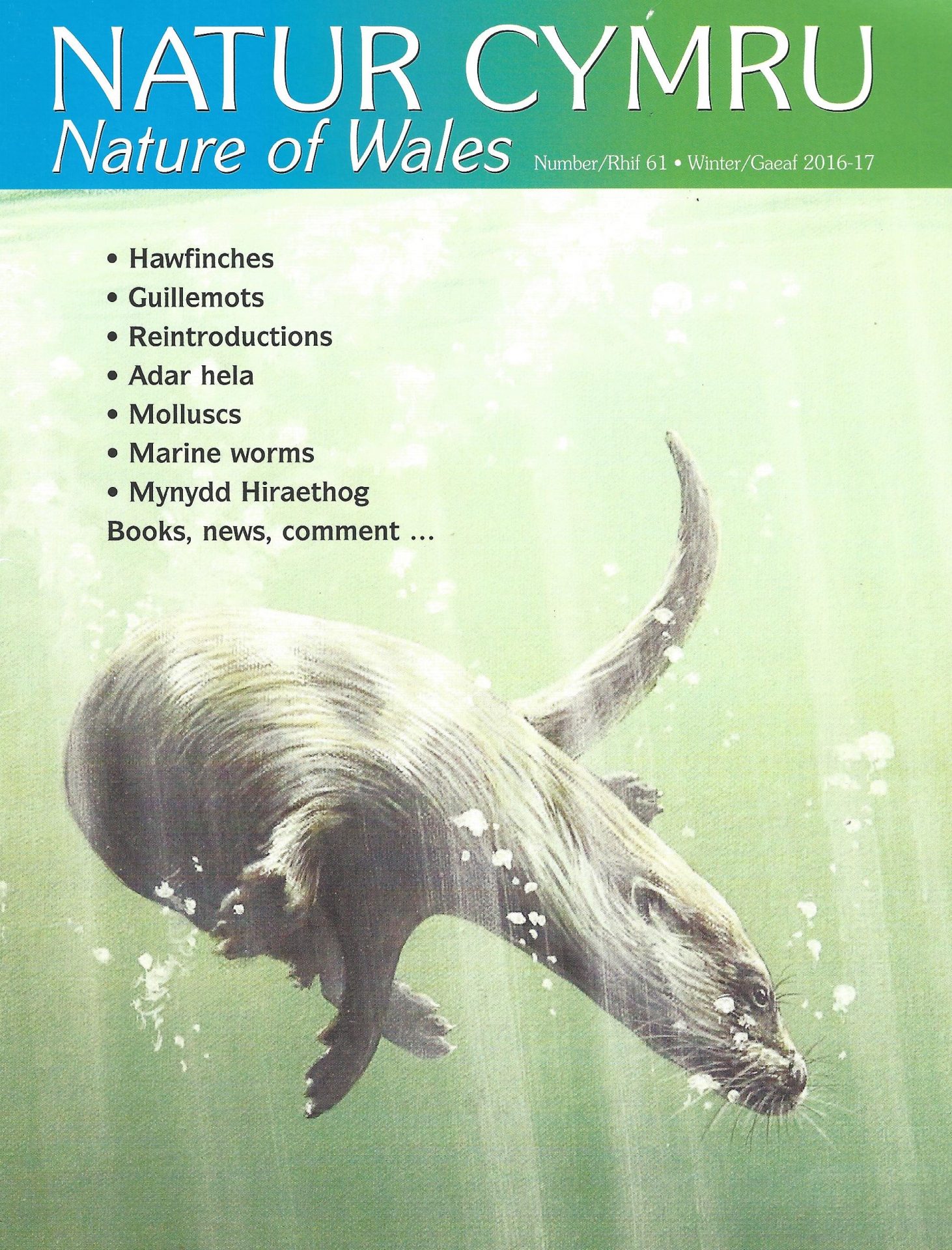
Protecting our ancient woodland - the need for vigilance. An update from the Woodland Trust.
Yn ddiweddar daeth y newyddion da bod cynllun OPAL wedi cael ei ymestyn am gyfnod er mwyn parhau â'r gwaith o sbarduno pobl ar hyd a lled Cymru i ymddiddori yn yr amgylchedd naturiol ac i fynd ati i gasglu cofnodion am y byd o'u cwmpas. Bob Griffiths o gynllun OPAL sy'n crynhoi cefndir y priosect ac yn rhannu gwybodaeth am rai o'r llwyddiannau a'r heriau hyd yn hyn.
Welsh language article. The good news has recently come that the OPAL scheme has been extended for a period to continue the work of getting people across Wales interested in the natural environment, and collecting data about the world around them . Bob Griffiths of the OPAL scheme summarises the background to the project, and shares details of some of its successes and challenges so far.
A round-up of the latest news in the world of mammal conservation
A message from Martha (reviewed by Andrew Lucas)
The new wild: why invasive species will be nature's salvation (reviewed by Ian Rappel)
Days to remember - adventures and reflections of a mountain guide (reviewed by Kate Gibbs)
Latest news from Skokholm, Skomer, Ramsey, Grassholm, Bardsey.
Snug as a Bug - where insects and other invertebrates go in winter
Slugs and snails can be valuable indicators of the level of biodiversity and overall health of habitats. Imogen Cavadino and Ben Rowson have been studying three areas in South Wales managed by the Gwent Wildlife Trust and taking samples to examine mollusc populations. It's hoped the data collected will improve our understanding of these often tiny creatures, and lead to better management of the sites.
Mynydd Hiraethog is an extensive tract of rolling upland hills lying to the west of the towns of Denbigh and Ruthin in north Wales. John Osley charts how it and its wildlife have changed over the last 200 years.
The otter came close to extinction when persistent organochlorine agrochemicals built up in their food supply. Luckily they survived, and nearly all Welsh rivers and lakes now harbour them, But what would the picture be if they had been exterminated? Rob Parry provides his view of the likely arguments; readers might care to extend his ideas to other aquatic mammals.
I ba raddau gall ein llenyddiaeth daflu goleuni ar fywyd gwyllt Cymru yn y gorffennol? Mae cerddi Cymraeg y Canol Oesoedd yn fynhonnell werthfawr o gyfeiriadau a disgrifiadau o adar hela, er nad yw'r dasg o ddehongli'r cerddi hyn yn rhwydd bob amser. Yn yr erthygl hon mae Howard Williams yn rhoi blas i ni o gynnwys y cerddi a'r hyn y maen nhw'n ei ddatgelu am fywyd gwyllt ac am ddiwylliant ac arferion y cyfnod hwnnw.
Welsh language article. To what extent can our literature shed light on Welsh wildlife in the past? Medieval Welsh poems are a valuable source of references and descriptions of game birds, although the task of interpreting these poems is not always easy. In this article Howard Williams gives us a taste of the content of the poems and what they reveal about wildlife and the culture and customs of that time.
Partnerships between different species always intrigue. What is the relationship between the partners? Is the symbiosis friendly and cooperative, opportunistic, mutually beneficial, or to the detriment of one partner? Andy Mackie and Tim Whitton describe the complex relationship between a marine worm and a hermit crab.
The snail Myxas glutinosa is extinct in England but can still be found round the shores of Llyn Tegid. Determined searching at this site discovered it only grows on the underside of submerged rocks. Martin Willing describes the trials and tribulations involved in the study of this elusive mollusc, and outlines some of the findings.
In earlier articles in Natur Cymru 30 and 52, Tim Birkhead described in detail his long-term monitoring of guillemots on Skomer which began in 1972. Now he turns detective to discover how many guillemots were there when RM Lockley took photographs in 1934, and why numbers fell by a staggering 95% over the next 40 years.
The hawfinch is a species most birdwatchers know little about. They will at least know that they are rapidly declining in Britain, are very secretive and difficult to find a most times of the year, and, last but not least, they can crack cherry stones in that enormous beak. Dave Smith describes his personal odyssey to discover more about them in the Dolgellau area.
Introduction to the edition
News from the Natur Cymru board (bilingual)
